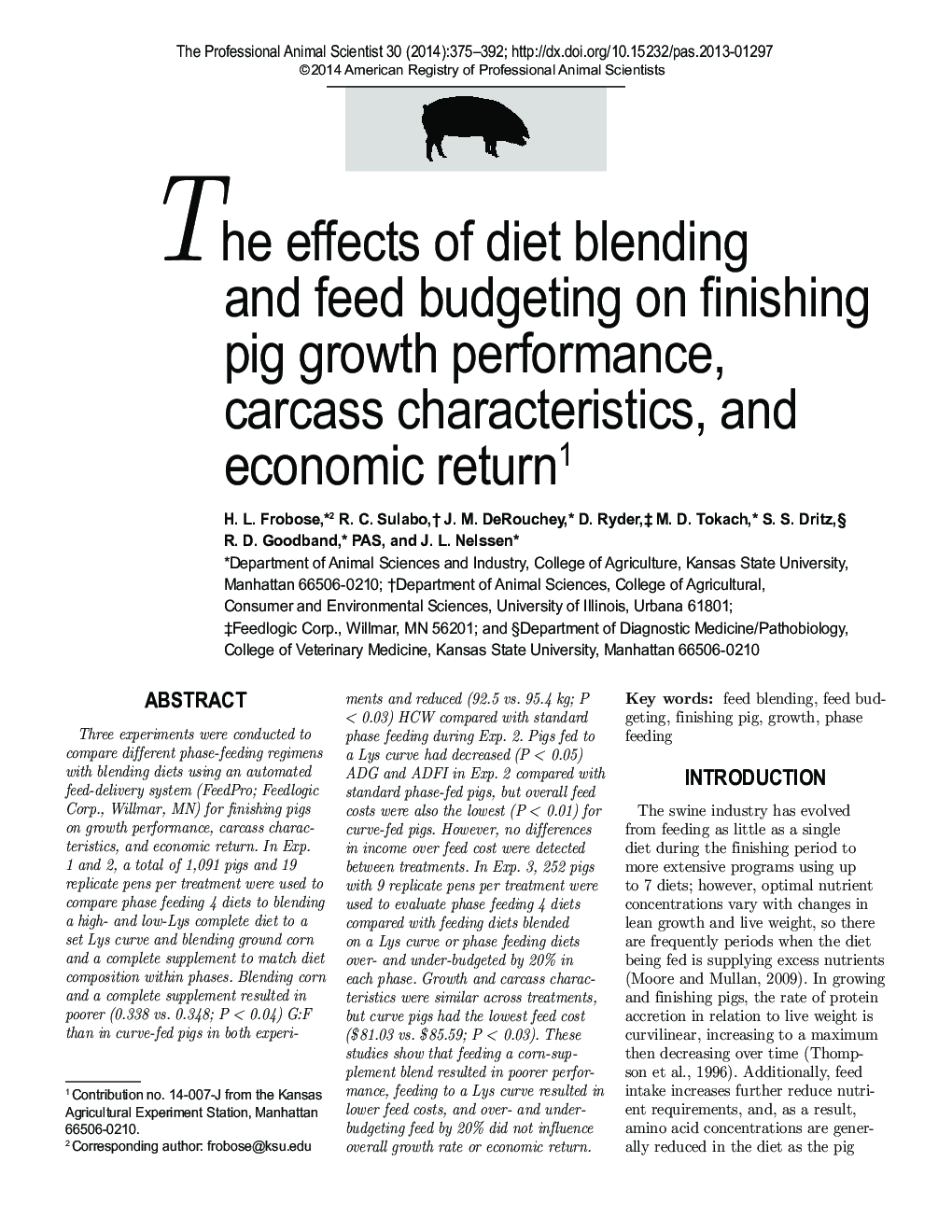| Article ID | Journal | Published Year | Pages | File Type |
|---|---|---|---|---|
| 2453860 | The Professional Animal Scientist | 2014 | 18 Pages |
Abstract
Three experiments were conducted to compare different phase-feeding regimens with blending diets using an automated feed-delivery system (FeedPro; Feedlogic Corp., Willmar, MN) for finishing pigs on growth performance, carcass characteristics, and economic return. In Exp. 1 and 2, a total of 1,091 pigs and 19 replicate pens per treatment were used to compare phase feeding 4 diets to blending a high- and low-Lys complete diet to a set Lys curve and blending ground corn and a complete supplement to match diet composition within phases. Blending corn and a complete supplement resulted in poorer (0.338 vs. 0.348; PÂ <Â 0.04) G:F than in curve-fed pigs in both experiments and reduced (92.5 vs. 95.4Â kg; PÂ <Â 0.03) HCW compared with standard phase feeding during Exp. 2. Pigs fed to a Lys curve had decreased (PÂ <Â 0.05) ADG and ADFI in Exp. 2 compared with standard phase-fed pigs, but overall feed costs were also the lowest (PÂ <Â 0.01) for curve-fed pigs. However, no differences in income over feed cost were detected between treatments. In Exp. 3, 252 pigs with 9 replicate pens per treatment were used to evaluate phase feeding 4 diets compared with feeding diets blended on a Lys curve or phase feeding diets over- and under-budgeted by 20% in each phase. Growth and carcass characteristics were similar across treatments, but curve pigs had the lowest feed cost ($81.03 vs. $85.59; PÂ <Â 0.03). These studies show that feeding a corn-supplement blend resulted in poorer performance, feeding to a Lys curve resulted in lower feed costs, and over- and under-budgeting feed by 20% did not influence overall growth rate or economic return.
Keywords
Related Topics
Life Sciences
Agricultural and Biological Sciences
Animal Science and Zoology
Authors
H.L. Frobose, R.C. Sulabo, J.M. DeRouchey, D. Ryder, M.D. Tokach, S.S. Dritz, R.D. PAS, J.L. Nelssen,
